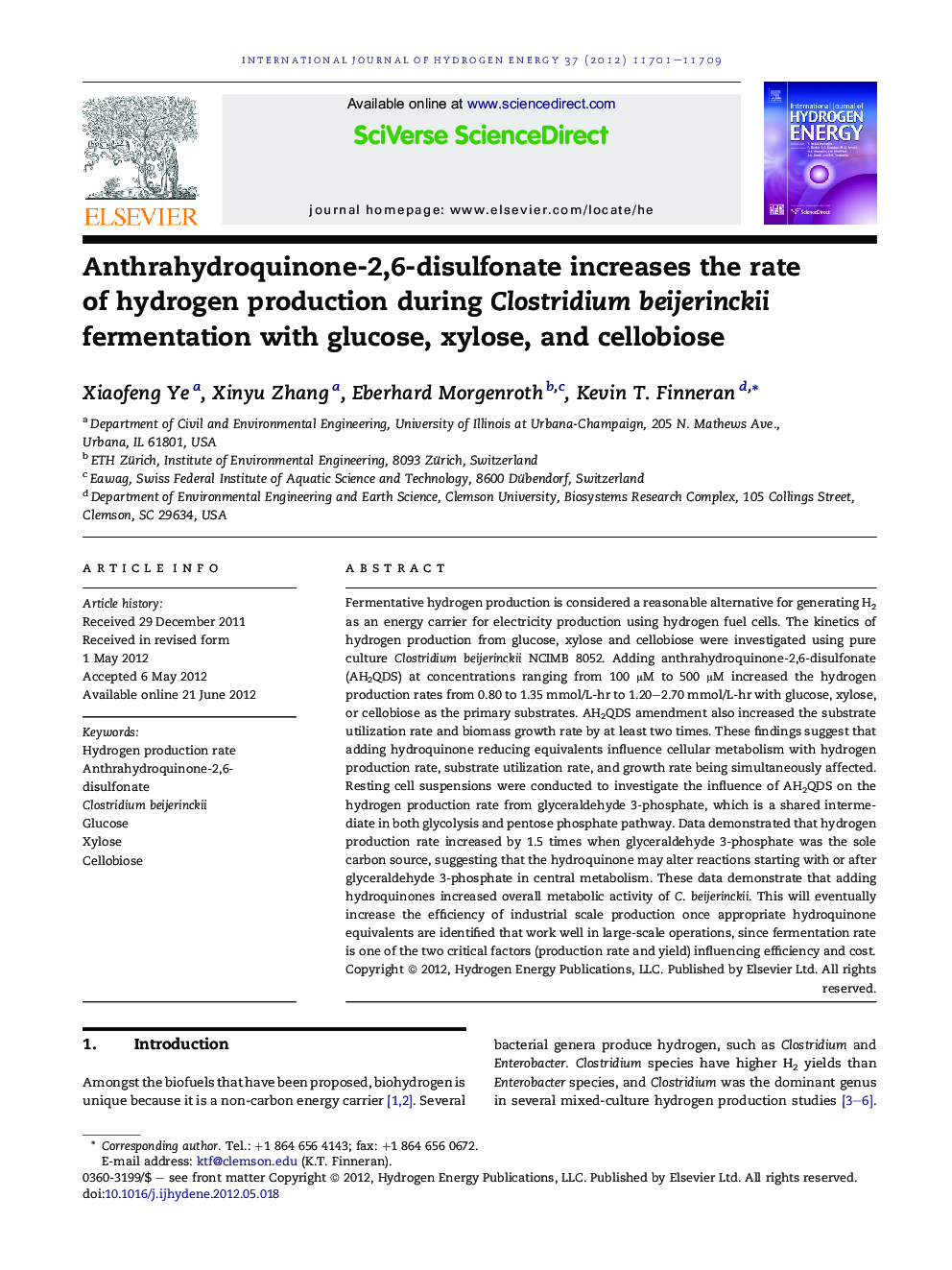| کد مقاله | کد نشریه | سال انتشار | مقاله انگلیسی | نسخه تمام متن |
|---|---|---|---|---|
| 1275038 | 1497553 | 2012 | 9 صفحه PDF | دانلود رایگان |

Fermentative hydrogen production is considered a reasonable alternative for generating H2 as an energy carrier for electricity production using hydrogen fuel cells. The kinetics of hydrogen production from glucose, xylose and cellobiose were investigated using pure culture Clostridium beijerinckii NCIMB 8052. Adding anthrahydroquinone-2,6-disulfonate (AH2QDS) at concentrations ranging from 100 μM to 500 μM increased the hydrogen production rates from 0.80 to 1.35 mmol/L-hr to 1.20–2.70 mmol/L-hr with glucose, xylose, or cellobiose as the primary substrates. AH2QDS amendment also increased the substrate utilization rate and biomass growth rate by at least two times. These findings suggest that adding hydroquinone reducing equivalents influence cellular metabolism with hydrogen production rate, substrate utilization rate, and growth rate being simultaneously affected. Resting cell suspensions were conducted to investigate the influence of AH2QDS on the hydrogen production rate from glyceraldehyde 3-phosphate, which is a shared intermediate in both glycolysis and pentose phosphate pathway. Data demonstrated that hydrogen production rate increased by 1.5 times when glyceraldehyde 3-phosphate was the sole carbon source, suggesting that the hydroquinone may alter reactions starting with or after glyceraldehyde 3-phosphate in central metabolism. These data demonstrate that adding hydroquinones increased overall metabolic activity of C. beijerinckii. This will eventually increase the efficiency of industrial scale production once appropriate hydroquinone equivalents are identified that work well in large-scale operations, since fermentation rate is one of the two critical factors (production rate and yield) influencing efficiency and cost.
► AH2QDS increases the rate of hydrogen production in Clostridium beijerinckii.
► Hydroquinone amendment increases substrate utilization and growth rate.
► Data demonstrate rate increases for glucose, cellobiose, and xylose.
► The influence of hydroquinone is global, affecting many simultaneous pathways.
► This strategy can be used to increase fermentative hydrogen production as a biofuel.
Journal: International Journal of Hydrogen Energy - Volume 37, Issue 16, August 2012, Pages 11701–11709